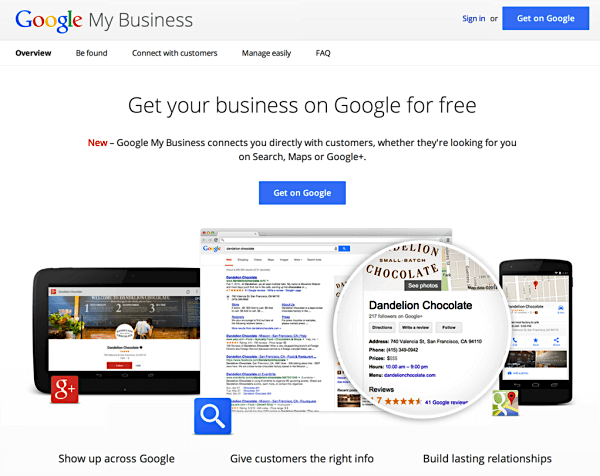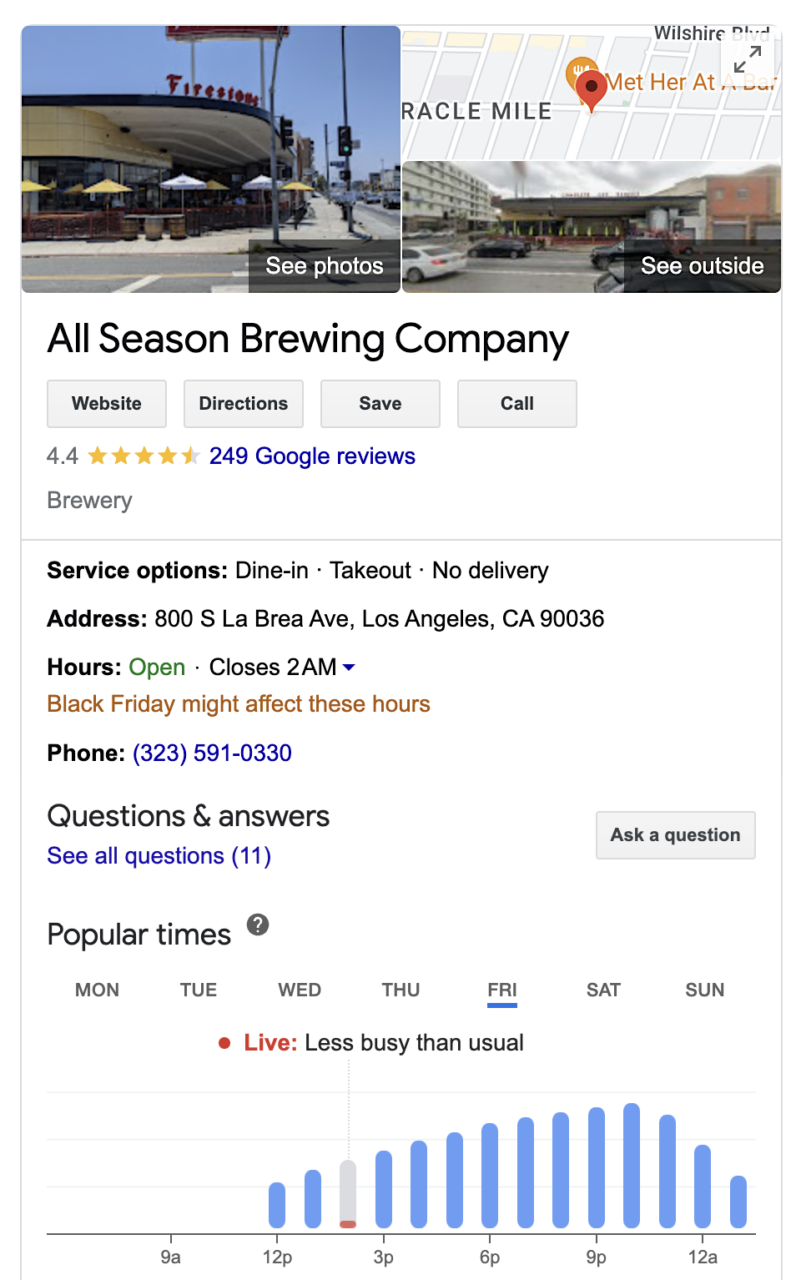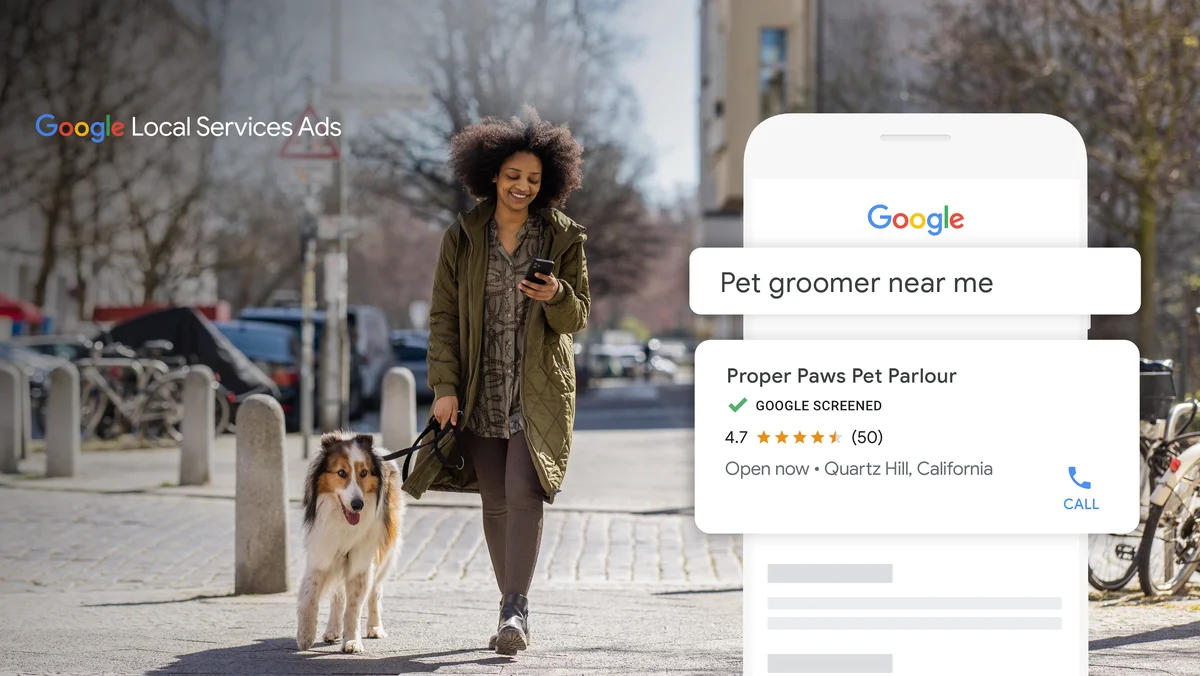Local marketing presents opportunities for small businesses, but it’s essential to know the right tactics that will increase conversions while improving your ROI. For many companies, creating local landing pages can satisfy advertising and organic SEO tactics.
This article explores local landing pages, focusing on Local Services Ads (LSAs), local SEO tactics, and potential expansion into international markets like Europe.
Local Landing Pages and SEO
Creating local landing pages tailored to specific areas is a valuable SEO strategy that complements Local Service Ads. These pages not only capture local demand, but also help improve search engine rankings, especially in less competitive regions.
Since 98% of users search online for local businesses, tailoring your landing pages for local traffic will benefit your local SEO campaign. One of the best impressions your business can make on local searchers is appealing to them with relevance through proximity.
If, for example, you’re running a nail salon in Des Moines, Iowa, and the optimal keyword to target for people searching for a nail salon in or near Des Moines is “pedicures in Des Moines,” you would want to experiment with a landing page containing specific content around that keyword:

But it can get even more granular. Your business might be centered in a major metropolitan area, but you’re wanting to access your audience in the surrounding suburbs and towns. In these cases, you might experiment with pages tailored for those surrounding areas.
For instance, Johnston, a small town outside of Des Moines, might contain a dense population that matches the core demographics of your target audience. In that case, you’d want to craft a local landing page tailored for Johnston residents.
But how can you optimize your landing pages even further?
Using Your Own Data to Prioritize Local Landing Pages
You can tap into your own Google analytics to see the highest densities of your traffic. From there, prioritize which areas are more deserving of local landing pages than others.
Of course, if you have the resources for it, it doesn’t hurt to have local landing pages made for all eligible areas that generate traffic for your business.
Take the following example of a business’s primary geographic sources of it’s site visitors:

What this tells us is that Los Angeles generates nearly twice as much traffic than any other area this brand services. Now, let’s assume the business is actually located in Los Angeles, which would then make sense for it to have more traffic there.
In that case, we would want to look at the next few surrounding cities and towns to see which areas deserve their own local landing pages.
You can access your geographic report in Google Analytics by following this click path: Reports > User Attributes > Demographic Details > Filter by “City”, “County” or whichever category you’re thinking about basing your local landing pages on:

Tips for Optimizing Your Local Landing Pages
For a long-term approach, consider developing a comprehensive website with dedicated city pages for major U.S. cities that your business is targeting. Paired with that, you’ll want to configure your Google My Business listing(s) for the areas you service:
Additionally, consider periodically auditing your landing page data using a dedicated local SEO audit framework. This process—reviewing NAP consistency, verifying your Google My Business listings, and conducting citation analysis—helps reinforce your overall local SEO strategy and provides actionable insights to measure your performance.

Here’s the step-by-step guide we recommend when deriving local landing pages from your core service pages:
- Conduct Keyword Research: Start by conducting keyword research to identify the most relevant and commonly searched keywords. Naturally, these keywords ought to be related to services you provide in your specific local areas. You can use tools like Google Keyword Planner or Semrush to find relevant keywords with a high search volume and low competition. If you’re using PPC marketing, pay attention to CPC to ensure you improve your ROAS.
- Create Unique Content: Develop informative content for each local landing page. Ensure that the content is engaging, relevant and valuable to your customers. Include details about the services your brand offers and any unique selling points you have.
- Optimize On-page SEO: Optimize each local landing page for on-page SEO. This includes optimizing meta titles, meta descriptions, header tags (H1, H2, H3), and image alt tags with local keywords.
- Incorporate Local Information: Include information about the targeted local area, such as the city or neighborhood name, in the page’s content, headers, and metadata. This helps search engines understand the local market and target the page to the right audience.
- Use Schema Markup: Implement schema markup on local landing pages to provide search engines with structured data about your organization. This data will include its name, address, phone number (NAP), and operating hours:

- Include Clear Calls to Action (CTAs): Incorporate clear and compelling calls to action on each local landing page. Encourage visitors to take specific actions, such as scheduling an appointment, calling the practice or filling out a contact form. You can even localize these CTAs by referring to the area the user is in during the conversion process. For example, “Book an appointment near you” or “Book an appointment in [Town Name]”.
- Mobile optimization: Ensure that local landing pages are responsive. Since 63% of Google’s U.S.-based organic search traffic is from a mobile device, a mobile-optimized page is essential for a positive user experience.
- Obtain high-quality images: Include high-quality images of your business on the local landing pages (especially if you have local branches in the area you’re optimizing for your local landing page). Visual content can be very helpful for potential customers.
- Grow Your Link Network: High-quality, relevant backlinks can boost search rankings. Contact local business directories, chambers of commerce chapters, and different brands similar to yours to request backlinks.
- Regularly Update Content: To maintain relevance and freshness, periodically update the content on local landing pages. Add new reviews, new services offered to specific areas, and anything that can make your local page more specific to the area it’s for.
- Monitor Analytics: We’ve touched on this already, but you can continue to use tools like Google Analytics to track the performance of your local landing pages. Monitor traffic, bounce rate, conversion rate, and keyword rankings to ensure you’re attracting and converting leads.
- Secure Local Reviews and Testimonials: Encourage satisfied customers to leave reviews on platforms like Google My Business. Showcase positive reviews and customer testimonials on your local landing pages to build trust and credibility.
Local Services Ads and How They Complement Local Landing Pages
First off, what are local service ads (LSAs)? They’re the ads that appear at the top of Google search results before the organic results. which makes them prime real estate for attracting local clientele.
In March 2023, Google expanded its LSA product to more than 70 types of businesses:

Companies in various local service industries such as dental practices, landscapers and restaurants can use these ads to stay connected to their community in a digital world.
But why are they an integral part of your strategy?
LSAs have become a cornerstone of local business marketing, offering a direct connection between businesses and potential customers. They’re denoted by their abbreviation information for, you guessed it, local service companies.
The ads themselves feature only a few simple details:
- Business name
- Google reviews
- Certification that the company is vetted by Google
- The area in which the business serves
- Hours of operation

LSAs continue to be a smart move for local businesses, especially in highly competitive markets.
But they definitely come with their own set of new challenges as well. As LSAs grow more popular among small business advertisers, Google has tightened its approval and verification processes.
In turn, meeting these requirements can be a hurdle for many local businesses. Nevertheless, the benefits of LSAs often outweigh the challenges, and agencies that can navigate the approval process stand to gain significantly.
Use Local Landing Pages to Dominate Google
The world of local business marketing demands a multifaceted approach. Fortunately, businesses can use local landing pages to satisfy these demands. Companies in various industries can use local landing pages for many tactics, such as Local Services Ads (LSAs), SEO, and Google My Business (GMB) management.
Take these steps into account and assess your data when expanding your website with local landing pages. With enough time and attention to local pages, you’ll see noticeable upticks in traffic from each area you service.
Local SEO Audit for Landing Pages
How to Do a Local SEO Audit
The best way to start optimizing your site for SEO is by knowing exactly where you stand today and how you stack up against the competition. To further enhance your strategy, review your NAP consistency, verify your Google My Business listings, and perform a citation analysis. Leverage your own data to inform continuous improvements on your local landing pages.
If you need help tackling the intricacies of geo-targeted optimization, Single Grain’s local SEO experts can help!👇
For more insights and lessons about marketing, check out our Marketing School podcast on YouTube.






